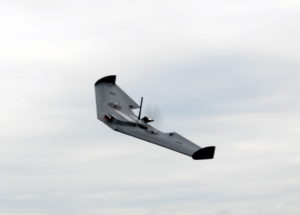
The FAA has frequently promised that regulations on drone flight beyond visual line of sight (BVLOS) will be prioritized. Other countries – like France – have allowed BVLOS flight since as early as 2012, which has allowed the French drone industry to move forward on commercial applications not available in the US. It’s a factor that contributed to France’s surprising place at the top of drone industry funding last year.
While we haven’t seen regulation yet, the FAA, NASA and industry contributors have been actively testing. And drone operations platforms are placing their bets that BVLOS flight will be legal soon.
ANRA Technologies, an industry-leading provider for off-the-shelf commercial drone platforms and services, will announce the release of DroneOSS 2.0 platform at InterDrone 2017 next week in Las Vegas. The DroneOSS platform is already heavily used globally – it’s a drone agnostic solution for real time flight planning, automated missions, airspace management, command and control, compliance, fleet management and multiple data analytic packages. But the latest release of the platform also features drone agnostic cloud based BVLOS C2 capabilities, in addition to integration into multiple leading data analytics engines and existing enterprise systems.
“The way we see it as a company, BVLOS flight is the future of commercial applications,” says ANRA’s CEO, Amit Ganjoo. (See DRONELIFE’s interview with Amit here.) “BVLOS is an enabler. We’re not talking about smaller or racing drones and joysticks – we’re talking about automated flights with commercial drones to allow for large scale monitoring and surveillance projects. There’s a lot of value there.”
ANRA is one of the industry players working on low altitude UAS Traffic Management and safe integration of UAS into the national airspace, something Ganjoo describes as “one of the key focus areas for ANRA. ” Drone integration is a major step in allowing for BVLOS flight and other modes of flight and applications currently prohibited in the US.
“We are participating in NASA and ICAO’s UTM programs and will be presenting at the Drone Enable UAS Industry Symposium in Montreal,” said Jim Begley, Director Business Development at ANRA. ANRA in collaboration with NASA has demonstrated how multiple UAS service suppliers (USS) can act as intermediaries between commercial operators and the FAA, air navigation service providers (ANSP) or the military and police forces. This will provide critical information to the FAA regarding UAS operations and receive information back from the FAA or ANSP when required. USS could also manage traffic for operators, take requests (or flight plans) and resolve conflict issues between operators before departure.
With progress being made on regulations and integration new versions of drone platforms that include BVLOS capabilities, like DroneOSS, could be the first signs that the US is getting closer to broader drone rules.
Miriam McNabb is the Editor-in-Chief of DRONELIFE and CEO of JobForDrones, a professional drone services marketplace, and a fascinated observer of the emerging drone industry and the regulatory environment for drones. Miriam has penned over 3,000 articles focused on the commercial drone space and is an international speaker and recognized figure in the industry. Miriam has a degree from the University of Chicago and over 20 years of experience in high tech sales and marketing for new technologies.
For drone industry consulting or writing, Email Miriam.
TWITTER:@spaldingbarker
Subscribe to DroneLife here.







[…] is likely to heat up as the Federal Aviation Administration considers how to handle drone flights beyond an operator’s visual line of sight. Last year, the FAA set up a pilot program to expand the envelope for such flights in up to five […]